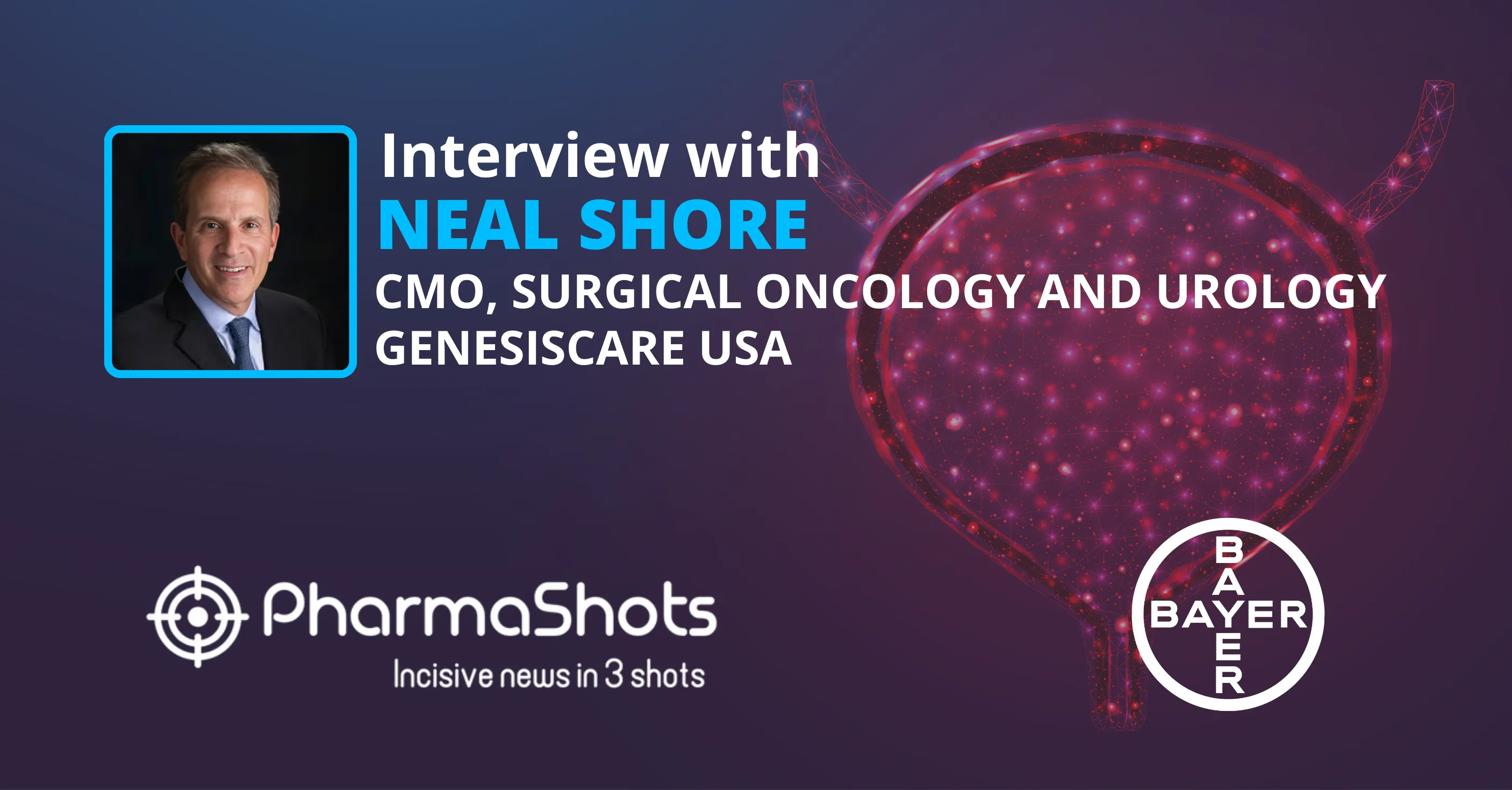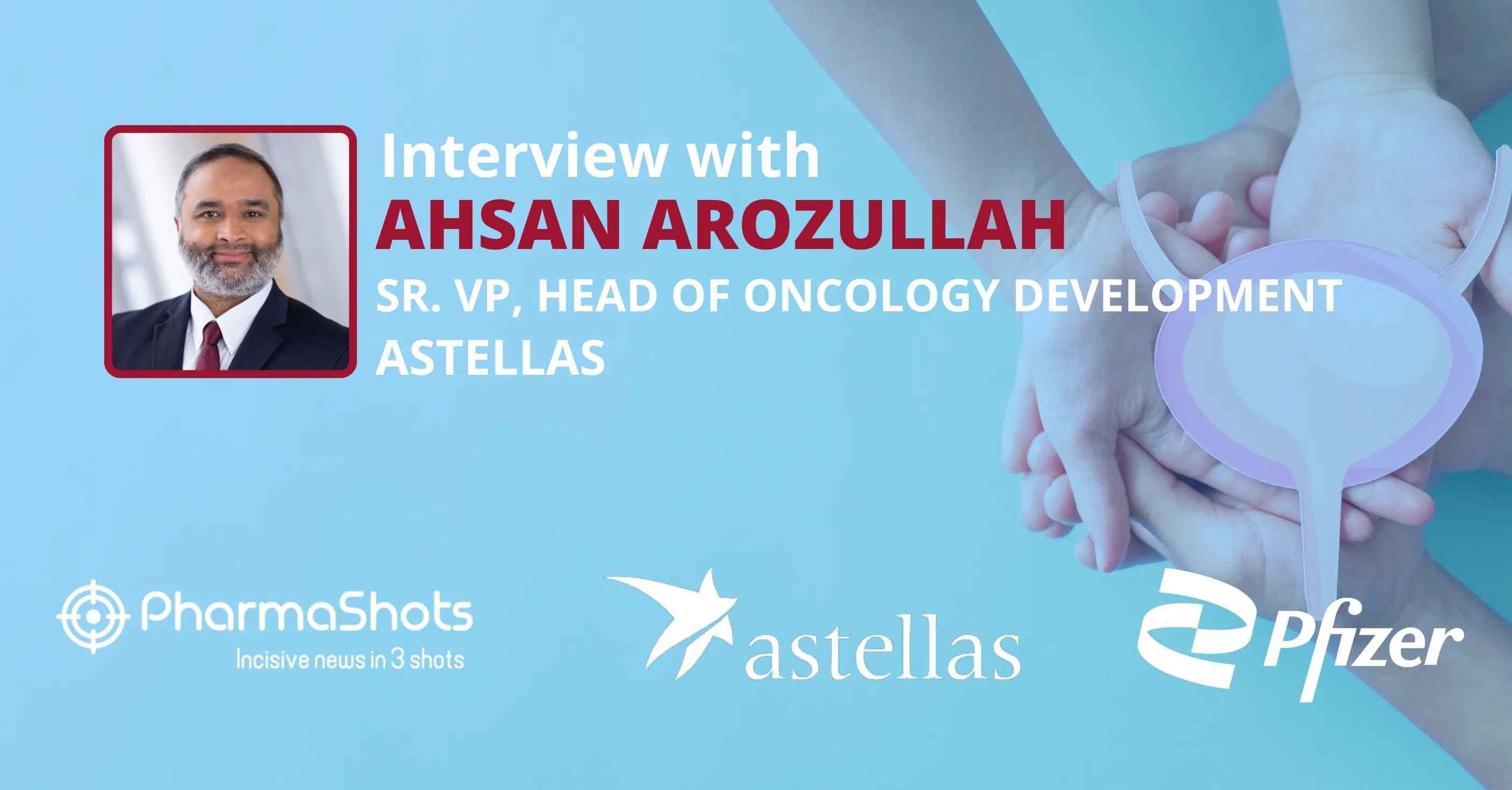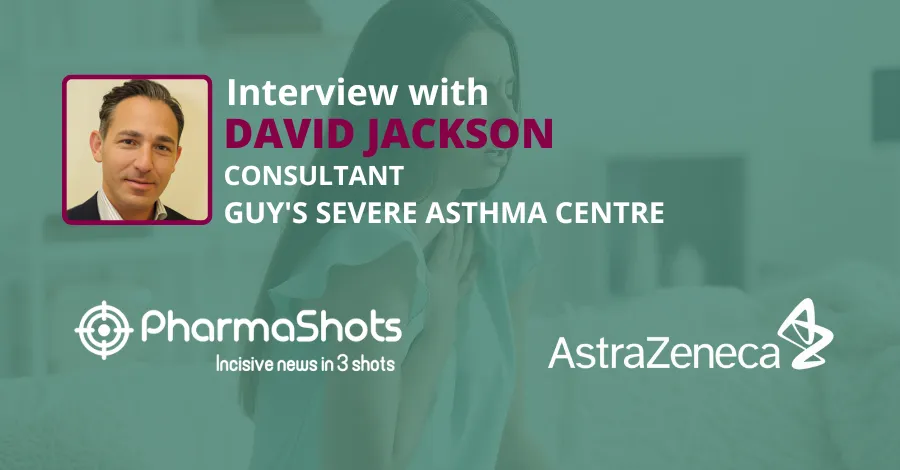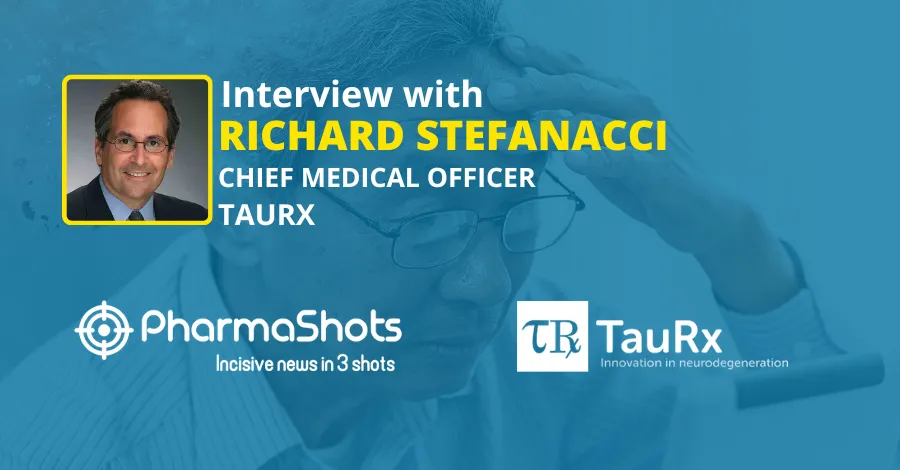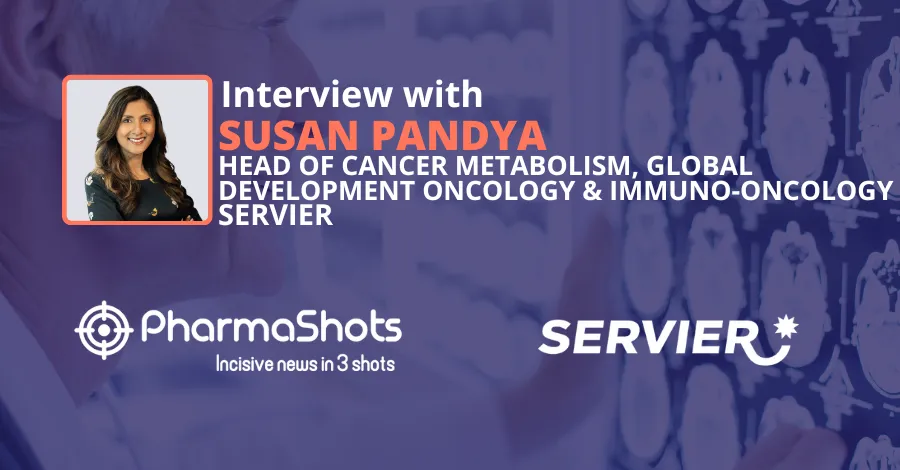
Marija Geertsen shares highlights of the data presented at the 65th AHS Annual Meeting
Shots:
-
Marija Geertsen shares the highlights of the data presented at the 65th AHS annual meeting, including insights from real-world experience with VYEPTI's review study
-
With a focus on the review study that delved into the experiences of 94 patients receiving VYEPTI treatment, Marija provides an in-depth account of the PROMISE 1 and PROMISE 2 trials
-
Marija sheds some light on disparities in migraine treatment, observed through the Harris Poll Migraine Report Card Survey
Saurabh: Can we please talk about the presentations that are being highlighted by Lundbeck during the 65th AHS annual meeting?
Marija: At the 65th Annual Scientific Meeting of the American Headache Society, Lundbeck presented a total of nine data presentations, including real-world experience with VYEPTI® (eptinezumab-jjmr), an anti-CGRP monoclonal antibody for the preventive treatment of migraine in adults, and one oral presentation highlighting disparities in migraine care and treatment from the Harris Poll Migraine Report Card Survey. These real-world data not only align with clinical data observed in the pivotal studies of VYEPTI, but also continue to support the long-term effectiveness and clinical benefit of VYEPTI as a preventive treatment option for adults living with migraine.
One of the key abstracts highlighted at the meeting is the Real-world Evidence and Insights into Experiences With eptinezumab-jjmr (REVIEW) study, which assessed real-world experiences with VYEPTI treatment among patients and physicians, including satisfaction with treatment effect on disease symptomology, quality of life, and infusion experience.
· The REVIEW study provides insights into the experiences of 94 patients who had received at least two doses of eptinezumab-jjmr in the clinical setting. Patients surveyed in this study were not excluded on basis of prior treatment with an anti-CGRP, and 89% reported at least 1 prior anti-CGRP mAb before VYEPTI. The study found the number of “good” days more than doubled following VYEPTI treatment (8 “good” days per month before VYEPTI and 18 “good” days per month after one dose). The proportion of patients reporting at least 10 days per month of over the counter or prescription medication for acute treatment were reduced by approximately two-thirds with VYEPTI. Furthermore, the majority of patients expressed satisfaction with the efficacy of VYEPTI to make migraine symptoms less severe (79%), to reduce the frequency (76%) and duration (66%) of migraine symptoms. Patients reported higher or much higher satisfaction with various elements of daily living and wellbeing after starting treatment with VYEPTI, including the ability to plan life, participation in social/family life, productivity at daily responsibilities, and confidence in overall well-being.
-
Regarding the infusion experience, while almost two-thirds of patients reported feeling some level of concern before receiving their first dose of VYEPTI, only 14% had any level of concern following treatment. In addition, almost all patients (94%) either agreed or strongly agreed that they found it convenient to receive treatment via an infusion, highlighting an overall positive experience with VYEPTI. From the physician perspective, the overall feedback received from patients on the VYEPTI infusion experience was positive/very positive.
The efficacy and safety of VYEPTI were demonstrated in two phase 3 clinical trials: episodic migraine in PROMISE 1 and chronic migraine in PROMISE 2. VYEPTI met its primary endpoint of decrease in mean monthly migraine days (MMD) over months 1-3 in both episodic and chronic migraine. The safety of VYEPTI was evaluated in 2,076 patients with migraine who received at least one dose of VYEPTI. The most common adverse reactions (≥2 percent and at least 2 percent or greater than placebo) in the clinical trials for the preventive treatment of migraine were nasopharyngitis and hypersensitivity.
Saurabh: Our readers want to know about the key discussion points of the symposium that Lundbeck has sponsored which is entitled ‘Research to Practice. Clinical implications of real-world use of an anti-CGRP mAb in high-frequency migraine’.
Marija: The symposium was led by leading experts in migraine, Drs. Richard Lipton, Wade Cooper, and Amaal Starling.
During the symposium, Dr. Lipton highlighted that despite recent migraine treatment advancements, there continues to be gaps in care and low use of preventive treatments, which may lead some patients to experience high burden of disease and frequent acute medication use. Patient needs may vary and goals should be individualized with consideration of differing characteristics. In clinical trials, this real-world, heterogenous migraine population is usually not captured.
The panel agreed that real-world evidence can help bridge the gaps in research and clinical practice. Drs. Cooper and Starling reviewed the extensive clinical trial data of VYEPTI from PROMISE-2 and PREVAIL as well as the real-world data from the REVIEW study. The results from REVIEW not only aligned with those observed in the clinical studies, but also demonstrated the effectiveness and satisfaction of VYEPTI as a preventive treatment option for the real-world migraine population seen in clinical practice.
Saurabh: Would you please discuss with us the key highlights of PROMISE 1, PROMISE 2, and REVIEW trials?
Marija: The Real-world Evidence and Insights into Experiences With eptinezumab-jjmr (REVIEW) study assessed real-world experiences with VYEPTI treatment among patients and physicians, including satisfaction with treatment effect on disease symptomology, quality of life, and infusion experience, which further support the clinical profile of VYEPTI in preventive migraine treatment. Specifically:
The REVIEW study provides insights into the experiences of 94 patients who had received at least two doses of eptinezumab-jjmr in the clinical setting. Patients surveyed in this study were not excluded on basis of prior treatment with an anti-CGRP, and 89% reported at least 1 prior anti-CGRP mAb before VYEPTI. The study found the number of “good” days more than doubled following VYEPTI treatment (8 “good” days per month before VYEPTI and 18 “good” days per month after one dose). The proportion of patients reporting at least 10 days per month of over the counter or prescription medication for acute treatment were reduced by approximately two-thirds with VYEPTI. Furthermore, the majority of patients expressed satisfaction with the efficacy of VYEPTI to make migraine symptoms less severe (79%), to reduce the frequency (76%) and duration (66%) of migraine symptoms. Patients reported higher or much higher satisfaction with various elements of daily living and wellbeing after starting treatment with VYEPTI, including the ability to plan life, participation in social/family life, productivity at daily responsibilities, and confidence in overall well-being.
-
Regarding the infusion experience, while almost two-thirds of patients reported feeling some level of concern before receiving their first dose of VYEPTI, only 14% had any level of concern following treatment. In addition, almost all patients (94%) either agreed or strongly agreed that they found it convenient to receive treatment via an infusion, highlighting an overall positive experience with VYEPTI. From the physician perspective, the overall feedback received from patients on the VYEPTI infusion experience was positive/very positive.
The efficacy and safety of VYEPTI were demonstrated in two phase 3 clinical trials: episodic migraine in PROMISE 1 and chronic migraine in PROMISE 2. VYEPTI met its primary endpoint of decrease in mean monthly migraine days (MMD) over months 1-3 in both episodic and chronic migraine.
In PROMISE-1:
-
Mean migraine frequency at baseline was approximately 8.6 migraine days per month and was similar across treatment groups.
-
Mean change from baseline in MMD with VYEPTI compared with placebo months 1-3: -3.9 days for 100 mg (p=0.018), -4.3 days for 300 mg (p<0.001), and -3.2 days for placebo.
-
Percent responders with at least 50 percent reduction in MMD in months 1-3 compared with placebo: 49.8 percent for 100 mg (nominal statistical significance p=0.009), 56.3 percent for 300 mg (p<0.001), and 37.4 percent for placebo.
-
Percent responders with at least 75 percent reduction in MMD in months 1-3: 22.2 percent for 100 mg (p= not statistically significant), 29.7 percent for 300 mg (p<0.001), and 16.2 percent for placebo.
-
Greater percentage of placebo-treated patients had migraine on most days during the first 7 days of treatment compared to VYEPTI-treated patients.
In PROMISE-2:
-
Mean migraine frequency at baseline was approximately 16.1 migraine days per month and was similar across treatment groups.
-
Mean change from baseline in MMD compared with placebo months 1-3: -7.7 days for 100 mg (p<0.001), -8.2 days for 300 mg (p<0.001), and -5.6 days for placebo.
-
Percent responders with at least 50 percent reduction in MMD in months 1-3 compared with placebo: 57.6 percent for 100 mg (p<0.001), 61.4 percent for 300 mg (p<0.001), and 39.3 percent for placebo.
-
Percent responders with at least 75 percent reduction in MMD in months 1-3: 26.7 percent for 100 mg (p<0.001), 33.1 percent for 300 mg (p<0.001), and 15.0 percent for placebo.
-
Greater percentage of placebo-treated patients had migraine on each individual day during the first 7 days of treatment compared to VYEPTI-treated patients.
The safety of VYEPTI was evaluated in 2,076 patients with migraine who received at least one dose of VYEPTI. The most common adverse reactions (≥2 percent and at least 2 percent or greater than placebo) in the clinical trials for the preventive treatment of migraine were nasopharyngitis and hypersensitivity.
Saurabh: The company has mentioned the Harris Poll Migraine Report Card Survey. Tell us about the key insights & the significance of the survey.
Marija: Our focus at Lundbeck is on restoring brain health, so every person can be their best. We seek to address health disparities that impact brain health.
As part of this commitment, we partnered with leading KOLs on the Harris Poll Migraine Report Card Survey to assess and compare self-reported experiences with migraine-related treatment, care, and burdens on daily life in U.S. adults currently experiencing HFM+AMO versus previous HFM+AMO, grouped by self-reported race and ethnicity, in an effort to identify potential health disparities.
Results from the survey found disparities in migraine treatment, such as the usage of preventive medication, as well as the perceptions of care, in adults with HFM+AMO grouped by self-reported race and ethnicity, especially for Black adults. Specifically,
-
Black respondents were more likely to report that they were “very concerned” about their current health compared to White and Hispanic respondents (54%, 29% and 24%, respectively).
-
White respondents were 2-3 times more likely to use preventive treatment than Black and Hispanic respondents (20%, 7% and 10% respectively).
-
Black respondents were 4-7 times more likely to want to reduce worry/anxiety about the next migraine attack than White and Hispanic respondents.
-
White respondents were more likely to feel that they made decisions together with their HCP about treatment options when compared to Hispanic respondents (47% vs. 31% Hispanic; P<0.05).
Given the paucity of research on the experiences of diverse populations living with HFM and AMO, these findings uncovered critical insights on racial and ethnic treatment disparities amongst people living with migraine in the U.S. and how we may help meet the diverse needs of people with migraine.
Saurabh: What makes Lundbeck’s VYEPTI, a ground-breaking treatment alternative for patients with migraine?
Marija: VYEPTI® (eptinezumab-jjmr) is the first and only IV preventive treatment for migraine in adults. Based on two Phase 3 clinical trials in chronic and episodic migraine, VYEPTI is proven to reduce monthly migraine days over Months 1-3. VYEPTI was designed with high selectivity and affinity for the CGRP ligand and is 100% bioavailable at the end of the 30-minute infusion.
In addition to its differentiated route of administration (ROA), it also provides powerful migraine prevention that’s proven to reduce monthly migraine days with the first treatment, some as soon as Day 1. Benefits sustained for three months until the next infusion. There are many treatment options, but migraine disease is different for everyone and can be relentless. VYEPTI has a strong profile with consistent clinical and real-world data supporting its use among adult migraine patients who have failed on prior oral or subcutaneous migraine prevention treatments.
The retrospective observational Real-world Evidence and Insights into Experiences With eptinezumab-jjmr (REVIEW) study assessed real-world experiences with VYEPTI treatment among 94 patients and 4 physicians, including satisfaction with treatment effect on disease symptomology, quality of life, and infusion experience. Patients surveyed in this study were not excluded on basis of prior treatment with an anti-CGRP, and 89% reported at least 1 prior anti-CGRP mAb before VYEPTI. The study found the number of “good” days more than doubled following VYEPTI treatment (8 “good” days per month before VYEPTI and 18 “good” days per month after one dose). The proportion of patients reporting at least 10 days per month of over the counter or prescription medication for acute treatment were reduced by approximately two-thirds with VYEPTI. It’s important to note the small sample size of 94 patients and data are survey-based and dependent upon patient recall and personal interpretation of each question as written.
The safety of VYEPTI was evaluated in 2,076 patients with migraine who received at least one dose of VYEPTI. The most common adverse reactions (≥2 percent and at least 2 percent or greater than placebo) in the clinical trials for the preventive treatment of migraine were nasopharyngitis and hypersensitivity.
Saurabh: Discuss the epidemiology of migraine throughout the world.
Marija: Migraine is one of the most disabling diseases and the third most common in the world. Migraine is a complex and disabling neurological disease that affects more than 39 million Americans. It is estimated that nearly 1 in 4 U.S. households include somebody living with the disease. Migraine is prevalent in the US adult population with the greatest burden between the ages of 18 and 44 years.
Chronic migraine is characterized by at least 15 headache days per month, 8 or more of which are migraine days. Migraine that is less frequent than this is called episodic migraine. Episodic migraine is occurring in a headache pattern of <14 headache days per month, of which ≥4 were migraine days. Migraine attacks usually last 4 to 72 hours and the headache can be accompanied by nausea, vomiting, and sensitivities to light and sound, but also may be accompanied by more symptoms.
Several different factors can contribute to migraine, such as genetics, environmental factors, hormones, medications, and metabolic factors.
Migraine may substantially impact people’s ability to participate in everyday activities, such as work, school, and family or social activity. In the age group 25 to 49 years, headache disorder is the top cause of Years Lived with Disability (YLDs) globally.
In the U.S. alone, migraine accounts for more than 157 million lost workdays each year. In 2017, costs associated with migraine treatment continued to increase with annual costs estimated at $3.2 billion for outpatient visits, $700 million for emergency room (ER) visits, and $375 million for inpatient hospitalizations.
Saurabh: Why is Vyepti a better alternative for migraine over other approved targeted medications? Can we substantiate this with some comparative analysis/ data?
Marija: We haven’t conducted head-to-head studies with competitors and can’t comment on comparative data. VYEPTI® (eptinezumab-jjmr) is the first and only IV preventive treatment for migraine in adults. VYEPTI was designed with high selectivity and affinity for the CGRP ligand and is 100% bioavailable at the end of the 30-minute infusion. With one 30-minute IV infusion every 3 months, VYEPTI provides powerful migraine prevention that’s proven to reduce monthly migraine days with the first treatment, some as soon as Day 1. Benefits sustained for three months until the next infusion.
Migraine is a common, debilitating neurologic disease that can impact patients in the prime of their productivity, and limit functionality and quality of life. Over time, migraine may worsen, with attacks increasing in frequency, severity, and duration. While there are many treatment options, migraine disease is different for everyone and can be relentless. It’s important to have effective and convenient treatment options that meet the diverse needs of patients.
Related Post: Marija Geertsen, Vice President, U.S. Medical Affairs, Lundbeck Shares Insights from 12 Abstracts Presented at AAN 2023
Image Source: Canva
About the Author

Marija Geertsen
Marija Geertsen is the Vice President, Medical Affairs at Lundbeck US. She has 15+ years of industry experience in medical leadership roles. Marija translates environmental insights into medical strategies for meaningful drug development and impactful evidence communication. She earned MD from the University of Medicine, Rijeka, Croatia, and an MBA from AVT Business School.
Tags

Saurabh is a Senior Content Writer at PharmaShots. He is a voracious reader and follows the recent trends and innovations of life science companies diligently. His work at PharmaShots involves writing articles, editing content, and proofreading drafts. He has a knack for writing content that covers the Biotech, MedTech, Pharmaceutical, and Healthcare sectors.





